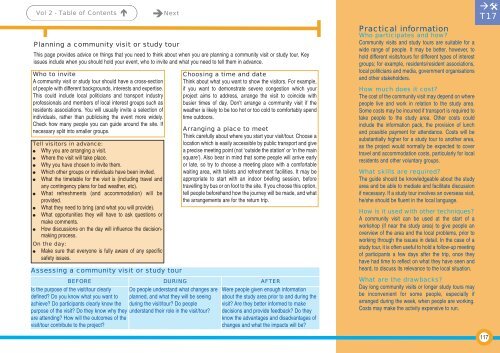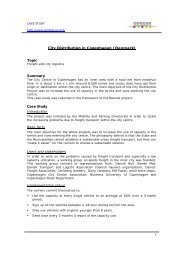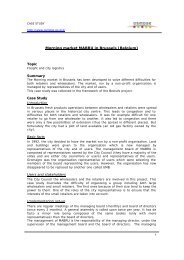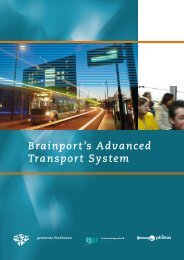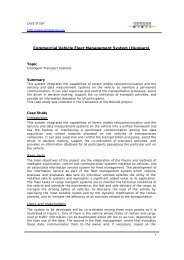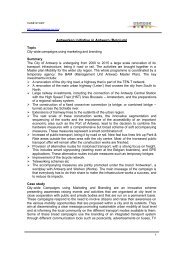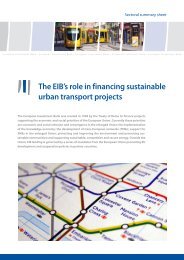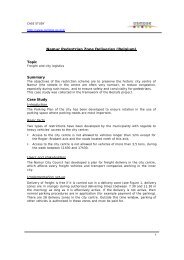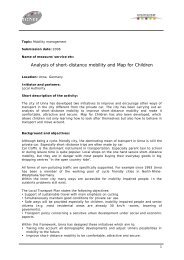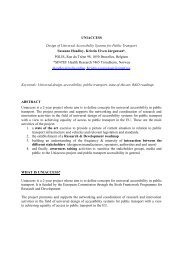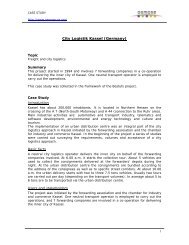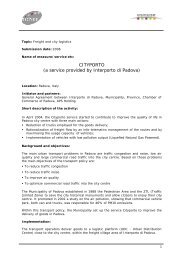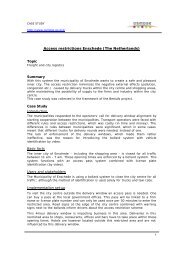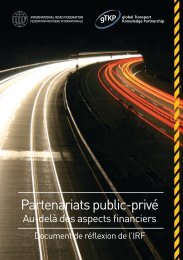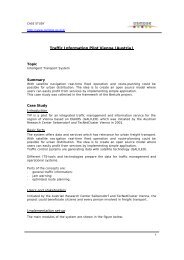Successful transport decision-making - Osmose
Successful transport decision-making - Osmose
Successful transport decision-making - Osmose
You also want an ePaper? Increase the reach of your titles
YUMPU automatically turns print PDFs into web optimized ePapers that Google loves.
Vol 2 - Table of Contents Next Practical information<br />
Who participates and how?<br />
Planning a community visit or study tour<br />
This page provides advice on things that you need to think about when you are planning a community visit or study tour. Key<br />
issues include when you should hold your event, who to invite and what you need to tell them in advance.<br />
Who to invite<br />
A community visit or study tour should have a cross-section<br />
of people with different backgrounds, interests and expertise.<br />
This could include local politicians and <strong>transport</strong> industry<br />
professionals and members of local interest groups such as<br />
residents associations. You will usually invite a selection of<br />
individuals, rather than publicising the event more widely.<br />
Check how many people you can guide around the site. If<br />
necessary split into smaller groups.<br />
Tell visitors in advance:<br />
Why you are arranging a visit.<br />
Where the visit will take place.<br />
Why you have chosen to invite them.<br />
Which other groups or individuals have been invited.<br />
What the timetable for the visit is (including travel and<br />
any contingency plans for bad weather, etc).<br />
What refreshments (and accommodation) will be<br />
provided.<br />
What they need to bring (and what you will provide).<br />
What opportunities they will have to ask questions or<br />
make comments.<br />
How discussions on the day will influence the <strong>decision</strong><strong>making</strong><br />
process.<br />
On the day:<br />
Make sure that everyone is fully aware of any specific<br />
safety issues.<br />
Assessing a community visit or study tour<br />
BEFORE DURING AFTER<br />
Is the purpose of the visit/tour clearly Do people understand what changes are<br />
defined? Do you know what you want to planned, and what they will be seeing<br />
achieve? Do participants clearly know the during the visit/tour? Do people<br />
purpose of the visit? Do they know why they understand their role in the visit/tour?<br />
are attending? How will the outcomes of the<br />
visit/tour contribute to the project?<br />
Choosing a time and date<br />
Think about what you want to show the visitors. For example,<br />
if you want to demonstrate severe congestion which your<br />
project aims to address, arrange the visit to coincide with<br />
busier times of day. Don’t arrange a community visit if the<br />
weather is likely to be too hot or too cold to comfortably spend<br />
time outdoors.<br />
Arranging a place to meet<br />
Think carefully about where you start your visit/tour. Choose a<br />
location which is easily accessible by public <strong>transport</strong> and give<br />
a precise meeting point (not ‘outside the station’ or ‘in the main<br />
square’). Also bear in mind that some people will arrive early<br />
or late, so try to choose a meeting place with a comfortable<br />
waiting area, with toilets and refreshment facilities. It may be<br />
appropriate to start with an indoor briefing session, before<br />
travelling by bus or on foot to the site. If you choose this option,<br />
tell people beforehand how the journey will be made, and what<br />
the arrangements are for the return trip.<br />
Were people given enough information<br />
about the study area prior to and during the<br />
visit? Are they better informed to make<br />
<strong>decision</strong>s and provide feedback? Do they<br />
know the advantages and disadvantages of<br />
changes and what the impacts will be?<br />
Community visits and study tours are suitable for a<br />
wide range of people. It may be better, however, to<br />
hold different visits/tours for different types of interest<br />
groups; for example, residents/resident associations,<br />
local politicians and media, government organisations<br />
and other stakeholders.<br />
How much does it cost?<br />
The cost of the community visit may depend on where<br />
people live and work in relation to the study area.<br />
Some costs may be incurred if <strong>transport</strong> is required to<br />
take people to the study area. Other costs could<br />
include the information pack, the provision of lunch<br />
and possible payment for attendance. Costs will be<br />
substantially higher for a study tour to another area,<br />
as the project would normally be expected to cover<br />
travel and accommodation costs, particularly for local<br />
residents and other voluntary groups.<br />
What skills are required?<br />
The guide should be knowledgeable about the study<br />
area and be able to mediate and facilitate discussion<br />
if necessary. If a study tour involves an overseas visit,<br />
he/she should be fluent in the local language.<br />
How is it used with other techniques?<br />
A community visit can be used at the start of a<br />
workshop (if near the study area) to give people an<br />
overview of the area and the local problems, prior to<br />
working through the issues in detail. In the case of a<br />
study tour, it is often useful to hold a follow-up meeting<br />
of participants a few days after the trip, once they<br />
have had time to reflect on what they have seen and<br />
heard, to discuss its relevance to the local situation.<br />
What are the drawbacks?<br />
Day long community visits or longer study tours may<br />
be inconvenient for some people, especially if<br />
arranged during the week, when people are working.<br />
Costs may make the activity expensive to run.<br />
<br />
T17<br />
117


